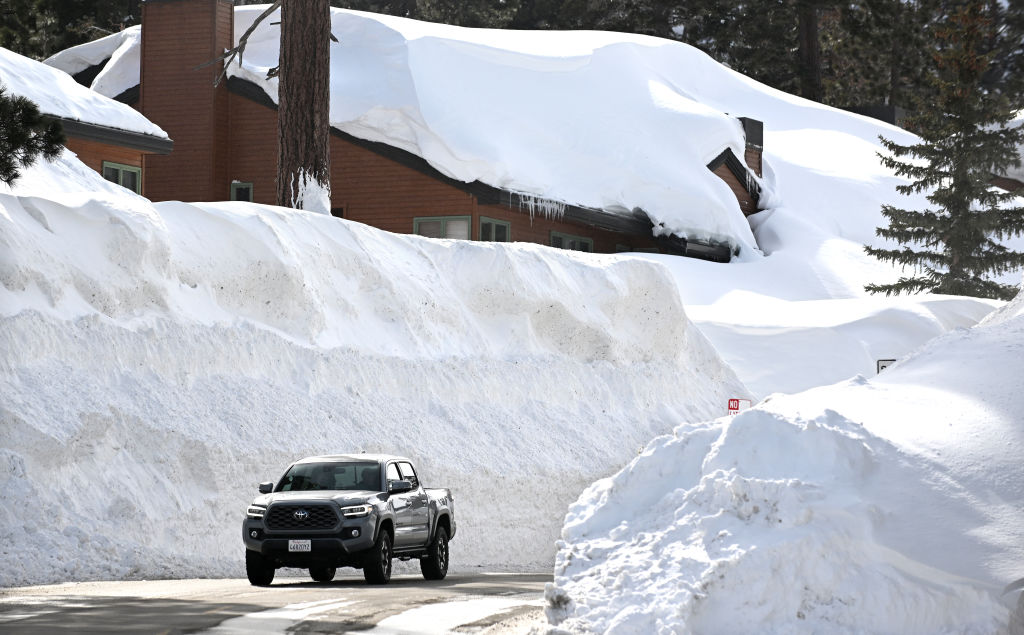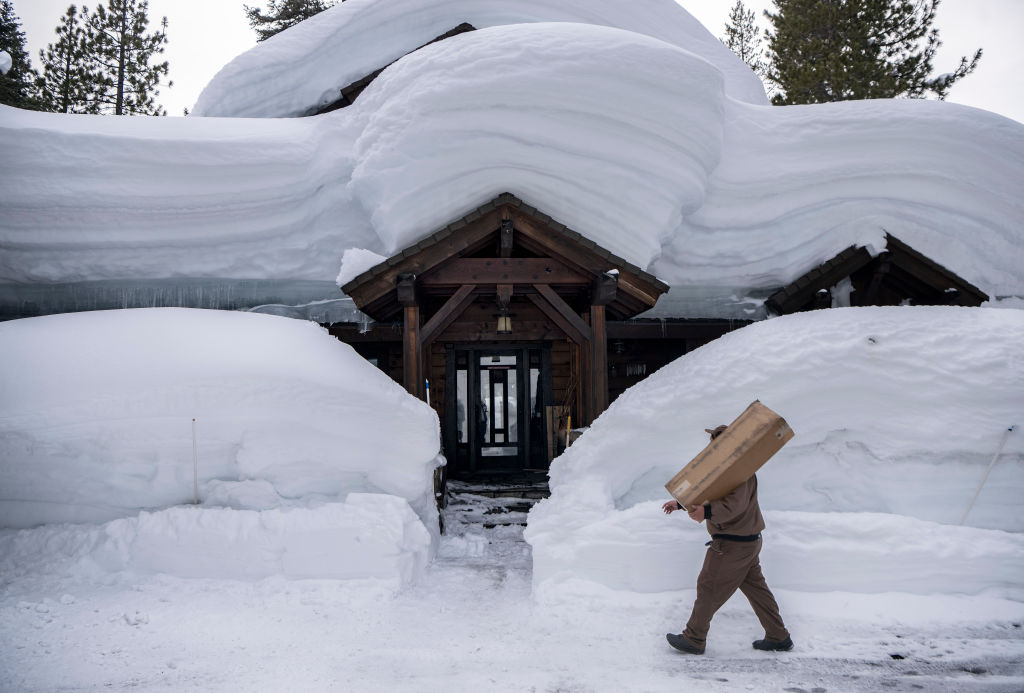As hardy Canadians, we endure most snowstorms with relative ease, often taking for granted the infrastructure that allows us to quickly dig out from otherwise crippling snow events.

But in California, it’s a different story.
Snowfall over the past two weeks has varied from a dusting along the coast to upwards of 150 inches (3.8 metres) in mountain towns. Some resorts in the Sierra Nevada mountain range are pushing 600 inches of snow this season, reports The Washington Post.
The recent storms have prompted officials to declare a state of emergency in 13 counties and as of this week, hundreds of rescue operations have been performed to retrieve residents and tourists from the hardest-hit areas.
And while the snow marks good news for the parched state’s ongoing drought, it’s also led to avalanches, multi-car pile-ups, collapsed roofs, deaths and left many arms sore from extensive shovelling.
So much snow has fallen in the Sierra and other mountain ranges that residents are still struggling to dig out days after earlier storms.
In the San Bernardino Mountains, east of Los Angeles, a late February storm reached blizzard status. Mountain towns like Lake Arrowhead were buried.
To make matters worse, California is now bracing for the arrival of another atmospheric river that forecasters warn will bring heavy rain, strong winds, thunderstorms and the threat of flooding.
The flood threat comes from the combination of rain and melting of parts of the huge snowpack built in California’s mountains by nine atmospheric rivers early in the winter and later storms fuelled by a blast of arctic air.
The new atmospheric river is a type known as a “Pineapple Express” because it is a deep tap of warm subtropical moisture stretching over the Pacific to Hawaii. Its greatest impacts are expected in northern and central California.
The snowpack at high elevations is so massive it should be able absorb the rain, forecasters said. But elevations below 4,000 feet (1,219 meters) will see melting and runoff. The National Weather Service characterizes the flood threat as “moderate.”
At high elevations the storm is predicted to dump heavy snow, as much as 8 feet (2.4 meters) in some locations.
California’s Sierra Nevada snowpack, which provides about a third of the state’s water supply, is more than 180 per cent of the average on April 1, when it is historically at its peak.
Another looming concern, right now, is where to put all the white stuff. On Sunday, Gov. Gavin Newsom’s office said that officials have removed enough snow off state highways in San Bernardino County to fill roughly 2,270 Olympic-size swimming pools.
In addition, private contractors had removed another 970,000 cubic yards of snow from other routes in the state.
The growing frequency and intensity of such storms and bouts of extreme drought are symptomatic of human-caused climate change, experts say. The storms make it more difficult to manage California’s precious water supplies while minimizing the heightened risks of floods and wildfires.
The looming deluge follows a barrage of nine such storms that triggered widespread flooding, mudslides, rockfalls and sinkholes across California from late December through mid-January. At least 20 deaths were attributed to the earlier storms.
— with files from The Associated Press and Reuters














Comments